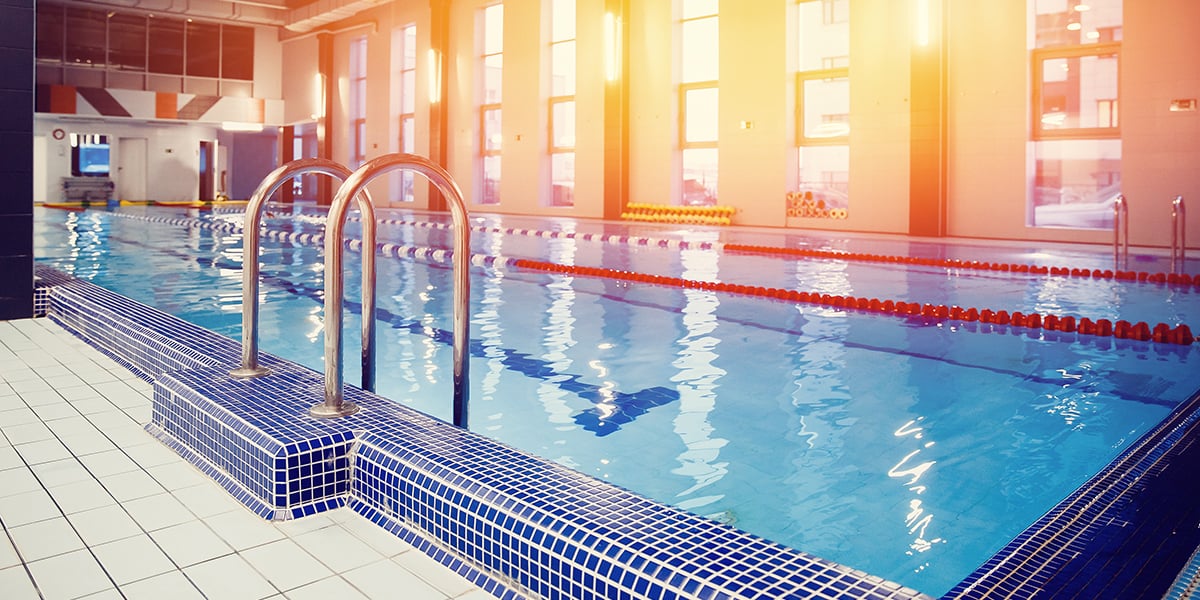5 chemical factors that affect swimming pool water quality
Swimming pool water quality is constantly changing as your facility is used by people and exposed to different environmental factors throughout the day. But how can you control the balance of chemicals in the water to protect your customers and your equipment from harm?
Controlling the chemistry of your pool ensures that water quality remains consistent and balanced. It keeps swimmers safe, prevents damage to the pool itself and ensures water is always clean and clear.
There are 5 chemical factors critical to keeping swimming pools safe and healthy:
- pH levels
- Alkalinity levels
- Calcium hardness
- Stain producing minerals
- Total dissolved solids
PH, alkalinity and calcium hardness levels along with water temperature determine the overall ‘water balance’ of a swimming pool, that is, its tendency to be ‘corrosive/aggressive’ or ‘scale forming’. With high pH and high alkalinity levels water can become cloudy and scale will form on pool surfaces and equipment. This can lead to damage to filters, heaters and general aesthetic issues.
With high pH levels, low alkalinity and soft water conditions pool lining, grouting and equipment will be subject to corrosion which, in turn, can be equally damaging to the lifespan of the pool and the comfort of swimmers.
Through regular testing and the use of chemical treatment swimming pool operators need to keep the water balanced - at levels where they can:
- Safely use chemical treatment to kill dangerous bacteria
- Protect expensive equipment from damage
- Keep the pool a pleasant environment for visitors to use at all times
1. pH levels
pH refers to the level of acidity in your water. pH levels are increased by your use of chemicals to control contaminants and algae growth. Your pH levels should typically remain between 7.2-7.4 at all times to avoid burning the eyes of swimmers and to allow for the effective use of chlorine.
However, whilst the risk of transmission of Covid-19 remains, the operating pH for your pool water should ideally be reduced to between 7.0 to 7.4 and maintained between 7.0 to 7.2. The free chlorine concentrations should also be raised to at least 1.5 mg/l and at the top of the recommended range for your pool.
These operating ranges may be adjusted in accordance with further guidance from other European Countries and other public health agencies e.g. Public Health England.
2. Alkalinity
Is intimately connected to pH. Total alkalinity refers to the ability of the pool water to resist a change in pH. A good alkalinity balance keeps pH levels optimal when acids such as sanitisers (like liquid chlorine) are introduced to the water. A pool’s alkalinity should be between 80-200 parts per million (PPM).
3. Calcium hardness
The presence of high calcium levels in water can result in scale and cloudiness in swimming pools, while low levels can also corrode pool linings. Even if the pool is vinyl or fiberglass, low calcium water will attack metal fittings and heat exchangers resulting in destruction of fittings and leaks in heaters. Corrosion can also cause stains to appear on pool surfaces.
Calcium content is best kept in the range of 80-200ppm, but higher levels can be
tolerated when properly managed. The best way to minimise the effect of high calcium levels is through the use of a sequestering agent.
4. Stain producing minerals
There are many minerals whose presence can produce discoloured pool water and actually stain the sides of the pool itself.
Iron
Iron is colourless in water but will react instantly with chlorine or other oxidizers to produce a rusty red color in water and orange coloured staining on pool surfaces. Iron can be accidentally introduced through fill water, so this process needs to be monitored closely.
Copper
Copper causes water to turn green and is responsible for blue-green to black staining on surfaces. It also can cause the hair and fingernails turning green of unfortunate swimmers. It can be swept into the pool through corrosion of copper heaters or from fill water. Copper contamination causes water to turn a clear green colour, whereas green water caused by algae would be green and cloudy.
Manganese
Manganese will colour pool water anything from pink to deep purple depending on the level present. Manganese only enters the pool from the source water either through natural occurrence or after being deliberately added by a water treatment plant in the form of potassium permanganate.
The staining effect of these metals on pool water and pool surfaces can be controlled by the use of sequestering agents. These should be used when the pool is being filled for the first time, and as part of regular preventive maintenance. It is far easier and less expensive to prevent staining caused by metals than to remove the stains once they have formed.
5. Total Dissolved Solids (TDS)
TDS is the total of all dissolved solid matter such as minerals, metals, salts and contaminants that are in the water. Levels can be measured with the right digital equipment. TDS is made up of many different chemical compounds, some of which are more harmful than others. For example, the presence of sodium chloride (salt) may not be a problem as it is commonly introduced to pools and is highly soluble, but calcium compounds even in low levels can be an issue.
Generally speaking TDS levels should be no more than 1000ppm above that of the mains. So, if the mains TDS level is 500ppm, then the swimming pool levels should not exceed 1499ppm.
Higher levels may cause:
- Cloudy or hazy water
- Difficulty in maintaining water balance
- Reduction in sanitizer activity
- Foaming
A note on chlorine
Chlorine is a vital part of keeping the chemistry in swimming pool water properly balanced. But use too much and you’ll end up burning the eyes of your customers while overcoming your pool with a strong odour. Too little, on the other hand, and the pool’s alkalinity and pH can run wild. This can lead to things like cloudy water and algae growth.
Combined chlorine should be less than 1ppm and ideally less than 50% of the free chlorine. Free chlorine should be between 0.5ppm and 2ppm
Conclusion
A regime of regular testing and treatment is required to keep the chemical balance of the water in your swimming pool at optimal levels. It’s not just required to keep swimmers safe from infection and comfortable as they use the facility, vital though that is. It is also critical to keep your equipment working properly and save you money from breakdown, corrosion and costly clean up tasks.
Topics: Swimming Pools

Written by Jon Greaves
Jon has progressively worked through operational roles, account management, technical management, and senior management roles over the last 16 years within one of the group companies before moving into the role of Water and Air Managing Director. Jon has experience across multiple sectors of water and air compliance, including district energy networks; data centres; healthcare; food and beverage and facilities management. Jon acted as a corresponding steering committee member on CIBSE CP1 – Heat Networks Code of Practice for the UK released in 2020.



